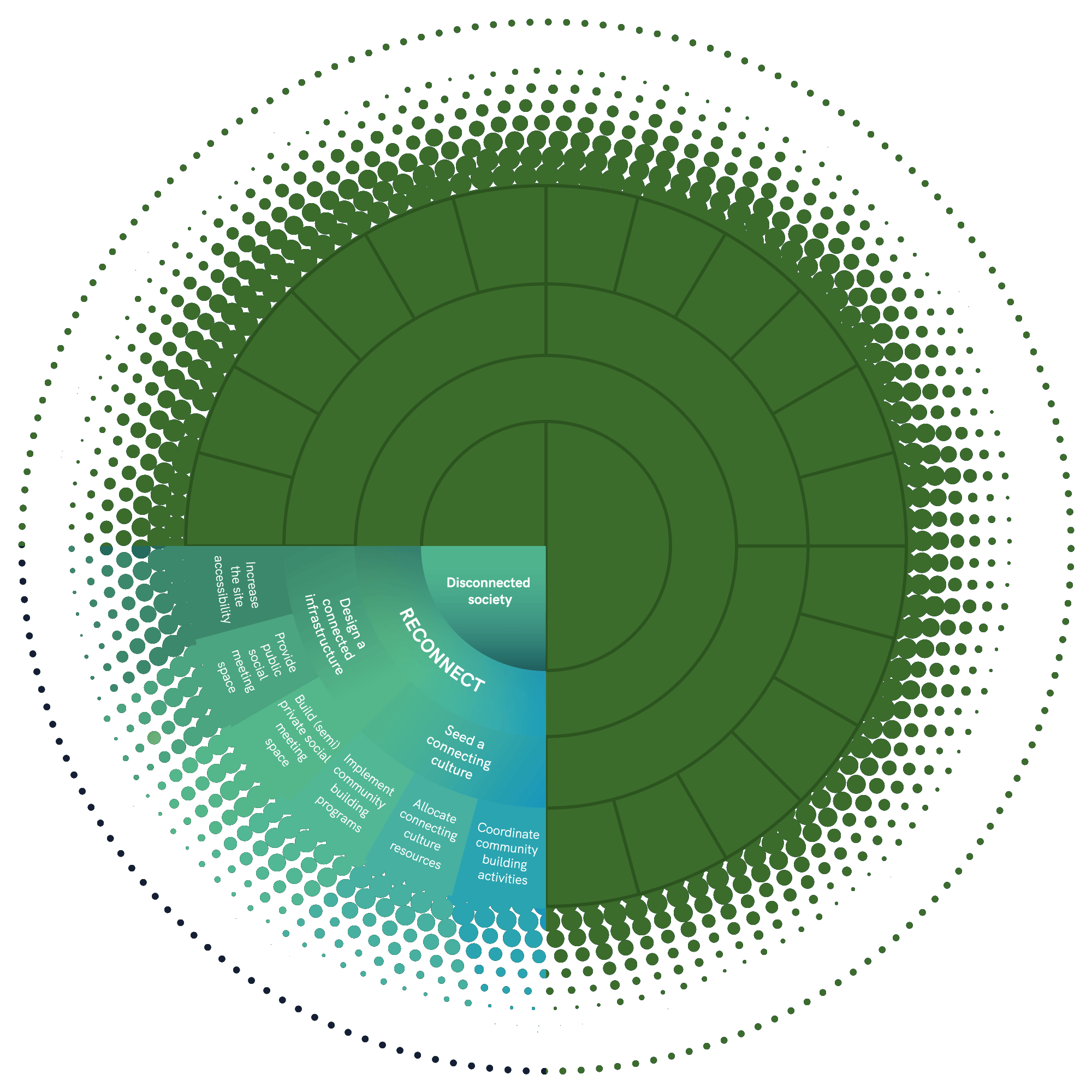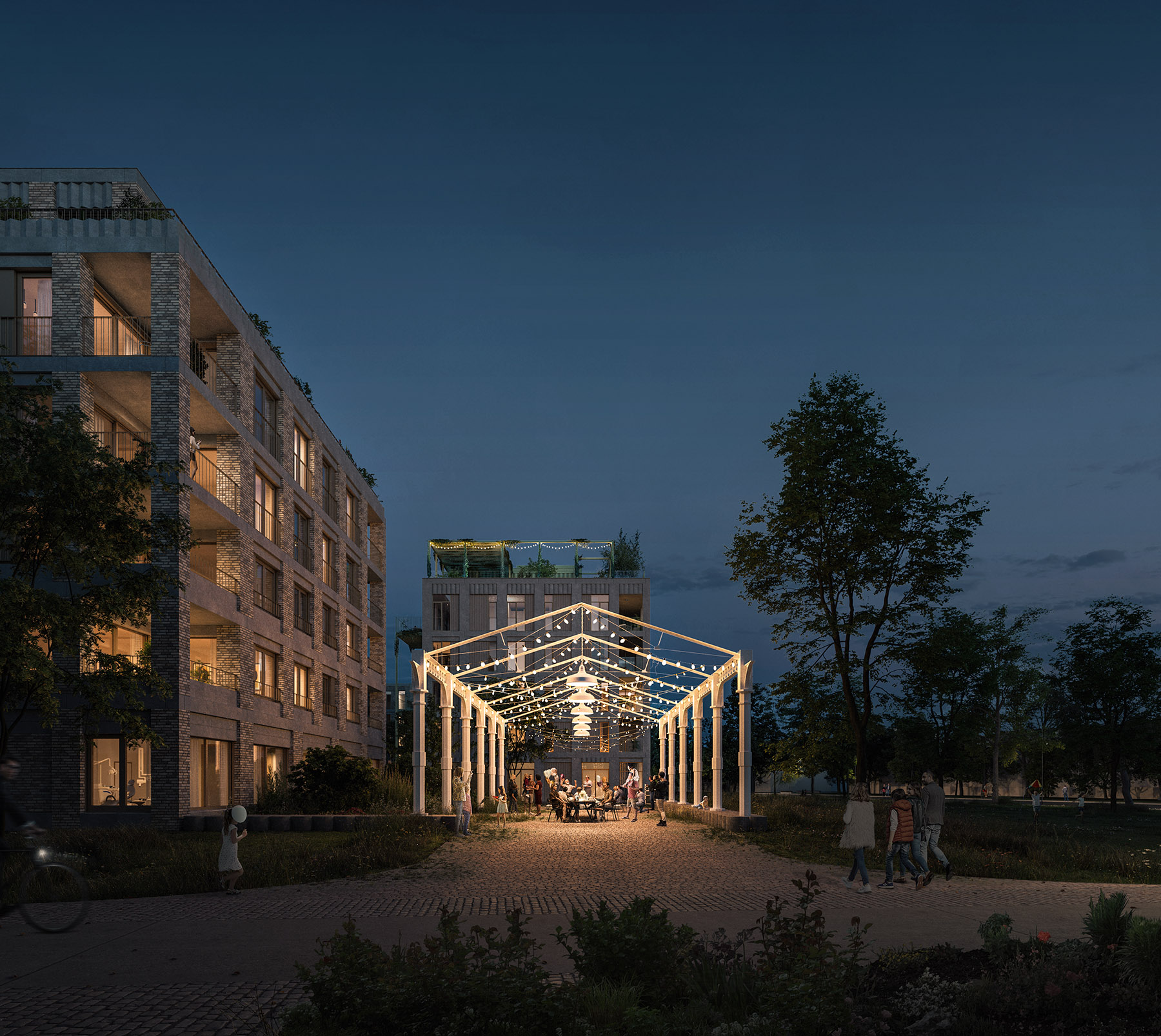RECONNECT – SOCIETY



DESIGN A CONNECTING INFRASTRUCTURE
Increase site accessibility
Provide public social meeting space
Build semi-private social meeting space

SEED A CONNECTING CULTURE
Implement community building programmes
Allocate connecting culture resources
Coordinate community building activities
7
41%
34%
51% of acquired sites were built at time of acquisition. We lowered the built footprint to 34%, creating additional open space.
16
Brownfield covenants – essentially agreements made between the Flemish Government and developers – were registered, none have been.
130
14
Ambitions
Mapping and measuring community building
Our ambition for community building is clear: we not only want to count the number of events that we organise and initiate, but also better measure and map the effects of our community building initiatives through an objective and in-depth monitoring and evaluation system. This should allow us to learn from our experiences, refine our processes and maximise the impact of our efforts.
Caring neighbourhoods
When possible, we want to evolve to caring neighbourhoods and ecosystems where cross-pollination is paramount. In these neighbourhoods, health and connected neighbourly relationships are central, aimed at building up a social network, solidarity and caring coexistence. These caring neighbourhoods should be participatory and available for everyone.

Cases
Co-housing process guidance - Komet
A vibrant working community – Watt The Firms
Collective green management - Minerve

Co-housing process guidance – Komet
A central part in phase 2 of Revive project Komet (Mechelen, Belgium) features co-housing “Compagnie”. We take our future inhabitants of the cohousing step by step towards living together in the cohousing. While the group is growing, we are paving the road towards sharing a building and putting up a system of collaboration and shared decision making. Further on in the process we will support the group by setting up a good financial management system, a set of household rules for the communal areas, setting up a system of social activities for connecting people.

A vibrant working community – Watt The Firms
Revive project Watt The Firms (Ghent, Belgium) is a pioneering collective office concept. By encouraging interaction and creating shared spaces, it not only promotes a pleasant working environment, but also stimulate cross-pollination between different companies, leading to new opportunities and a feeling of coming home at work. Coordinated by two community managers there is an ongoing programme of community activities, ranging from physical and mental health initiatives to social and educations gatherings and more, all working towards a strong community spirit and network building. The residing companies are innovative and progressive and strive for a sustainable corporate culture where cooperation and mutual support are central.

Collective green management – Minerve
At the Minerve project (Edegem, Belgium) we currently run a pilot project on collective maintenance of public greenery, connecting the Minerve neighbourhood with surrounding streets and the nearby Fort V heritage site. As collective green management often leads to better maintained neighbourhoods and more sustainable green management, we are investigating, together with landscape architect OMGEVING, the municipality of Edegem, a number of Minerve residents and a dedicated Revive team, whether we can develop a joint approach to the green management of the public domain and the collective gardens.

